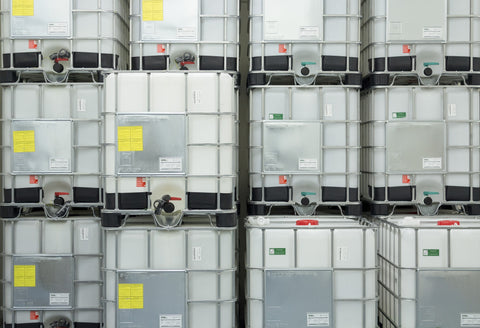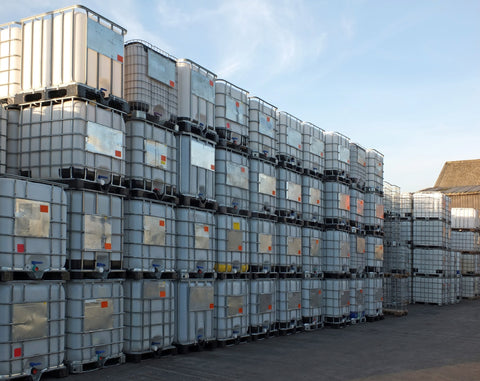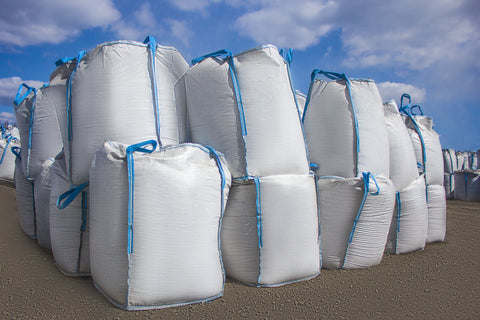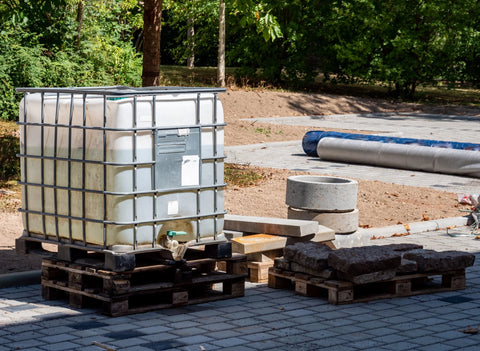What is an IBC tote used for?
What are IBC totes? IBC tanks or IBC totes, also known as Intermediate Bulk Containers, are large containers that store and transport liquids, powders, and granular materials. They are often used in the food and beverage industry, as well as the chemical industry. IBC totes are available in a variety of sizes, but the most common size is the 275-gallon tote. And with that standard 275-gallon tote you can replace up to five 55-gallon drums.
If you need an IBC tote for your business, there are a few things you should know about storage, shipping, tracking, and identification. Here's a quick guide on everything you need to know about IBC totes and IBC tanks.
What is the purpose of IBC totes?
Most manufacturers use intermediate bulk containers for the safe storage and shipment of toxic substances, including benzene. Stainless steel totes protect tanks from explosion risks when being transported. A fusible spout is installed in each tank to let air out when the internal temperature has reached the specified range to prevent explosions. Various persons may also utilize this container when storing water, particularly at building sites or events which require constant water supplies without the main water source. In the agriculture sector, IBC tanks are used for transporting fertilizers and pesticides. Some stores even carry foods such as wheat grains for transport.
Another of the many advantages to the large capacity of an intermediate bulk container is that you can avoid using many smaller containers and fit more material or liquids into the IBC tanks. Given the fact that they can also be stacked vertically or moved around easily with a pallet jack, it becomes much simpler to move a higher volume range of product in less time and with fewer issues.
Types of IBC Tote Tanks
There are two types of IBC tanks: rigid totes and flexible totes. Rigid totes are made of plastic or metal and have a fixed shape. Flexible totes are made of a bladder that is encased in a frame. Each type of tote has its advantages and disadvantages.
Rigid totes are more durable and have a longer lifespan than flexible totes. They are made of high-density polyethylene. They are also easier to stack and can be stored in smaller spaces. Many rigid intermediate bulk containers are stainless steel IBC totes. However, rigid totes are more expensive than flexible totes. But they are much safer for holding hazardous materials, transporting chemicals, and flammable liquids.
Flexible totes are less likely to leak than rigid totes because they have fewer seams. They are also easier to clean than rigid totes. However, flexible totes can be damaged more easily than rigid totes and have a shorter lifespan.
If you are looking for more detailed specifications in your IBC, like finding a food grade IBC, you will want to ensure that you check the IBC manufacturer details to ensure that your food bulk materials are being stored in a container that is appropriate for large quantities of food storage. You will also want to be aware, when transporting any food ingredients, that you maintain a consistent temperature on the container to be able to prevent the food from spoiling.
These IBC totes also save on space as they are easily stackable. They fit the size of a standard pallet dimension and can be stacked with a forklift or other industrial machines. You should check into the stacking test load to understand how many you can stack on top of each other safely. But given that these IBC totes are easily transported, you can be ready to ship your materials virtually anywhere in the world.
Storage & Shipping
Intermediate bulk containers should be stored in a cool, dry place away from direct sunlight. If you're planning on shipping your IBC container, it's important to choose a suitable method. Depending on the company and the various types of transport it is extremely important to choose the method most appropriate for you. The three most common methods for transport of IBC containers are by truck, rail, or ocean vessel. You will need to consider logistics costs and decide which shipping and handling option will serve you best.
Truck: Transportation by truck is the most common method for transporting IBC containers within the United States. Trucking companies have specialized equipment for loading and unloading intermediate bulk containers. Shipping by truck is typically the fastest option, but it can be more expensive than other shipping methods.
Rail: Transportation by rail is a good option if you're looking for a cheaper alternative to trucking. Rail companies have specialized equipment for loading and unloading intermediate bulk containers. Transport by rail is typically slower than trucking, but it can be more cost-effective.
Ocean Vessel: Transportation by ocean vessel is the best option if you're looking for an international transport solution. Ocean vessels have specialized equipment for loading and unloading IBC containers. Transportation by ocean vessel is typically the slowest option, but it can be the most cost-effective way to ship internationally.
Tracking & Identification
Once your IBC container has been shipped, it's important to track it so that you know when it will arrive at its destination. Most transportation companies will provide you with a tracking number that you can use to track your shipment online. It's also a good idea to label your IBC container with contact information in case it gets lost in transit.
Ready for transport with your IBC Totes
Now that you understand more about transporting an intermediate bulk container, or many of them. You should be ready to make big changes to your liquid transportation and IBC transport process. Utilizing a product made of heavy-duty materials that can carry various materials can help you create a more efficient process while meeting industry standards. Transport. atthis point becomes easy and you can easily follow regulations.
Depending on the area in which you are shipping these IBC tote tanks, temperature control can become a worrisome issue. You need to be able to avoid the different materials within from having problems with either getting too hot or too cold. There are many creative solutions for temperature control on the market, one of the most efficient being a tote heater blanket.
IBC totes are versatile shipping containers that have a variety of applications in different industries. They can be used to store water, food, chemicals, and other hazardous chemicals or materials. IBC totes come in both rigid and flexible varieties, and each type has its advantages and disadvantages.








